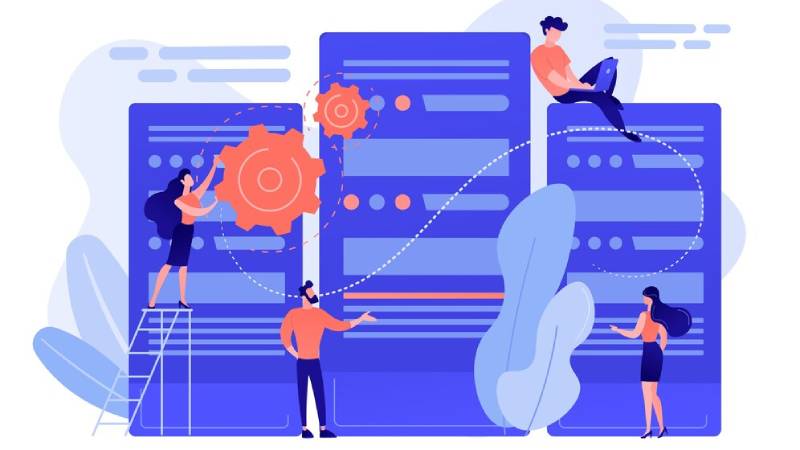
Visual FoxPro (VFP) has served many organizations well for over 40 years since its launch in 1984. However, as technology has advanced, companies using VFP may find it difficult to maintain over time. The good news is that with careful planning and the right migration strategy, transitioning from VFP to a more modern platform does not have to be overly complex or disruptive.
This article outlines the top 5 migration strategies to consider when moving away from VFP to help ensure a smooth and successful transition to platforms better positioned to meet your business needs today and into the future.
Assess Your Current VFP Application Landscape
Before determining the best migration path, it is important to understand your existing VFP infrastructure fully. Document all VFP applications currently in use, including:
- Core features and functionality
- Interdependencies with other systems
- Business criticality
- User base
This will help you:
- Prioritize applications for migration
- Identify potential risks
- Map out an appropriate migration order
- Develop test plans
- Estimate resources required
Focusing first on the applications that are most critical to your organization can help prove the migration strategy and build confidence before tackling additional components.
Choose Your Destination Platform
After you have a clear picture of the as-is VFP environment, you need to determine your target destination platform. You can consider many modern technology options and Visual FoxPro migration services that can offer greater stability, security, scalability and flexibility. Top options include:
Cloud Platforms
By migrating to a cloud platform, you future-proof the application and get the benefits of automatic updates, endless storage capacity, built-in backup and disaster recovery, and global availability zones. Top platforms to consider include:
- Microsoft Azure: A natural fit for many VFP apps, integrating seamlessly with SQL Server, .NET-based languages like C#, and Power Platform
- Amazon Web Services (AWS): The largest cloud provider with 200+ services, including database and analytics options to replace VFP
- Google Cloud Platform: Provides cutting-edge analytics and machine learning capabilities on top of core infrastructure services
On-Premise Platforms
If your organization has security, compliance or policy requirements to keep applications on-premise, these platforms offer robust VFP replacement options:
- .NET-Based Applications: Leverage languages like C# and VB.NET to reuse business logic while modernizing the data layer and UI
- Open Source Stacks: Use cost-effective and customizable open-source frameworks like Node.js, MongoDB, Python and React
- Commercial Packages: Purpose-built, pre-configured solutions like SAP, Oracle, Dynamics 365 also integrate well on-premise
Evaluate all operational requirements, long-term roadmap and budget when choosing your optimal destination.
Prioritize Migration Methods
Once the destination platform is defined, there are 5 primary methods to consider for migrating VFP applications:
- Manual Rewrite: Building apps natively on the new platform from scratch
- Automated Code Conversion: Tools to convert VFP code over to languages like C# or VB.NET
- Database Migration: Moving only the database over to the new back-end data store
- Hybrid “Lift and Shift”: Rehosting the VFP application to access the new database and features
- Full Migration: Converting both data and apps over to the new environment
The application’s complexity, time and budget constraints determine the best approach.
For instance, a full migration offers the most modernization benefits but is the most difficult to do. For some simpler apps, a database or a user interface refresh may be enough.
Prioritizing workloads allows the most flexible and appropriate techniques to be determined.
Modernize in Phases
Rather than tackle everything at once, take an incremental, phased approach:
1. Proof of Concept
Start with 1-2 low-risk applications with limited dependencies. This will allow you to prove the migration technology and process on a smaller scale.
2. Minimum Viable Product (MVP) Migration
Focus next on applications vital for daily operations. Deliver core functionality first in an MVP fashion before expanding features.
3. Full Feature Migration
Once process validation has been achieved, migrate the remaining systems and functionality in priority order. This will allow you to expand your capabilities over time while always remaining in continuity.
The phased approach allows energy to be directed at limited-scope increments, delivering faster with lower disruption. They can then gradually scale up migration investments, proving value.
Maintain Continuity During Transition
However, even with solid planning and phasing, some business disruption during a migration is expected. However, continuity of operations must be maintained as much as possible. Key strategies include:
- Gradual User Transitions: Slowly shift groups over to new applications while old system access continues for others
- Operation in Parallel: Run both old and new environments simultaneously during transition periods
- Feature Parity: Prioritize functions, ensuring users can complete critical daily work before adding new capabilities
- Expand Training: Scale up training programs with each phase to ease user adoption
- Develop Rollback Plans: Create mechanisms to revert back to VFP apps if severe issues emerge
With strong change management and communication plans, organizations can migrate at a pace suitable to meet continuity needs.
Conclusion
It’s not necessary to be a major hurdle to transition from aged technologies like Visual FoxPro if you have the right strategies. That’s fully cataloging your VFP landscape, selecting a modern destination platform, using migration and conversion techniques tailored to each application, phasing workloads, and keeping users continuous.
It does require some up front effort, but migrating core systems to modern, cloud-based infrastructure can bring real benefits in terms of performance, security, scalability and cost savings. Careful assessment and planning can enable VFP migration to be a success today and in the future.